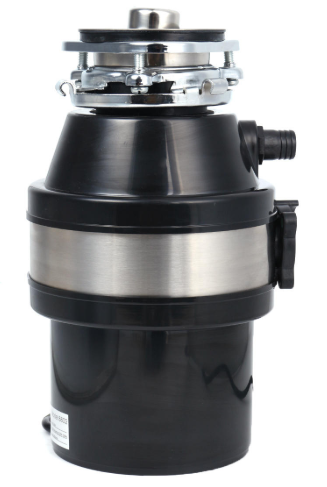 A garbage disposal is a little electric granulating unit that fits the underside of the waste gap in your sink. It has sharp edges that shred the waste that you feed into the channel opening, separating the nourishment into small pieces. An impeller arm at that point powers the macerated nourishment squander down the channel, alongside the water. There are two sorts of garbage disposal ordinarily utilized in U.S. kitchens: consistent feed garbage disposals, which work consequently when water streams into the unit; and cluster feed garbage disposals that work by turning a switch when the transfer chamber is full.
A garbage disposal is a little electric granulating unit that fits the underside of the waste gap in your sink. It has sharp edges that shred the waste that you feed into the channel opening, separating the nourishment into small pieces. An impeller arm at that point powers the macerated nourishment squander down the channel, alongside the water. There are two sorts of garbage disposal ordinarily utilized in U.S. kitchens: consistent feed garbage disposals, which work consequently when water streams into the unit; and cluster feed garbage disposals that work by turning a switch when the transfer chamber is full. Both constant bolster and clump feed garbage disposals work generally a similar way. The rest of this article centers around the nonstop feed kind to take a gander at the manner in which it gets utilized and to discuss at a couple of decides that you have to pursue when utilizing the unit. The exact opposite thing we need is for your garbage disposal to get stopped up on the grounds that you didn't understand that a few things are out and out awful for the transfer unit.
Initially, we need to accentuate the need to approach the garbage disposal with deference and play it safe. This little unit is ground-breaking! Never put your hands in the unit while it is working, for instance, as the granulating edges can cause genuine damage. Should the transfer get stopped up, constantly slice the power before endeavoring to move the blockage. Likewise wear defensive gloves, on the grounds that those edges are sharp. Second, never let a youngster work the garbage disposal.
Keep the Garbage Disposal Clean
A perfect garbage disposal will work productively for a long time. Nourishment waste can cover the sharp edges and, after some time, they quit working. Likewise, the sort of nourishment squander you hurl into the garbage disposal matters too. Fat and different oils, for example, can set in the garbage disposal and square the sharp edges. It's fitting to give the transfer unit a chance to pursue use, dislodging any pieces that haven't depleted away with the remainder of the waste. Utilize a bit of cleaning fluid to assist ease with excursion any obstinate bits, and consistently keep a solid progression of cold water.
Ice works
Ice is great at cleaning your garbage disposal. Two or three 3D shapes hurled in with the water function admirably at scouring the dividers and chamber, just as the edges. When the unit separates the ice into littler bits, it is splendid at getting to the difficult to arrive at regions of the transfer unit.
Crush little bones
In the event that you crush littler bones, similar to chicken and fish, it can help the garbage disposal work better. What those ground bones do is to scratch away the buildup of nourishment squander from the transfer dividers in a scouring activity. You could likewise utilize eggshells, yet recall, an excessive number of eggshells can have the contrary impact and transform into a glue when ground. This glue could cover the edges and the internal assembly of the garbage disposal.
Run the garbage disposal normally
One of the most critical issues is the point at which the garbage disposal doesn't get a lot of utilization. As it sits inert, any old nourishment squander in the framework solidifies and covers the chamber and dividers of the unit. Rust and erosion happen as well, making the framework progressively inclined to separate. Utilizing the garbage disposal normally guarantees all the moving parts continue working.
Be that as it may, to the exclusion of everything else, paying little respect to what the garbage disposal can do, we need to pressure that you should regard the transfer unit, and consistently consider the security perspective when working it. NEVER stick your fingers in the garbage disposal when the power is on, and never put anything metallic or sharp in the transfer unit.
In the event that you remember the correct practices, we think you'll adore utilizing your garbage disposal for a long time. It is a magnificent bit of kitchen gear and one that confines the measure of nourishment squander heading off to the landfill.


